11 Birds That Attack Humans: What You Need to Know (With Pictures)
Last Updated on
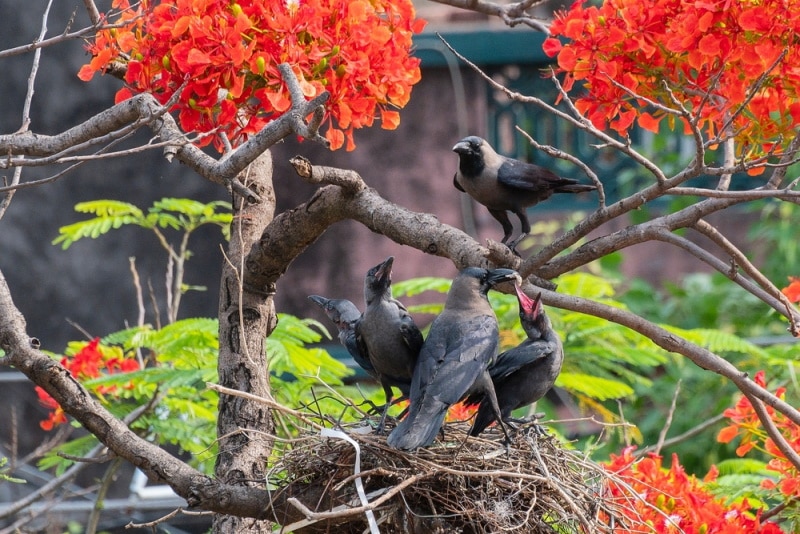
Although most birds are harmless to us, some of them can be quite dangerous. Certain species are known for attacking humans, typically when defending their nesting territory or young ones. They can also attack when they mistake you for food or prey.
Most attacks won’t harm you, but some could cause severe injuries like scratches and bruises. That’s why it’s good to know more about bids that attack humans, which we’ll cover in this article.
Keep reading to learn which birds attack humans and why they do it.

Why Do Birds Attack Humans?
There are various reasons why birds attack humans, although they commonly do it to protect their territory, nesting area, or their young ones. Some birds may attack you by mistake if they mix you up with a predator or if they mistake you for prey.
It’s also not uncommon for birds to attack you for no particular reason, but if they feel threatened or cornered by you. However, purely aggressive bird attacks are quite rare, and there’s typically a reason for the given behavior.
During the last few years, there has been a rise in birds attacking humans in the USA, although we’re partially to blame for that situation. Humans are approaching bird territories more than ever, aggravating the birds, which later results in an attack.
If you find yourself surrounded by angry birds, it’s best to try to stay away or seek shelter as some of the birds could hurt you. Also, try to remain calm without annoying the bird even more because more stress leads to the birds acting overly protective.
Top 11 Birds That Attack Humans
1. Swallows
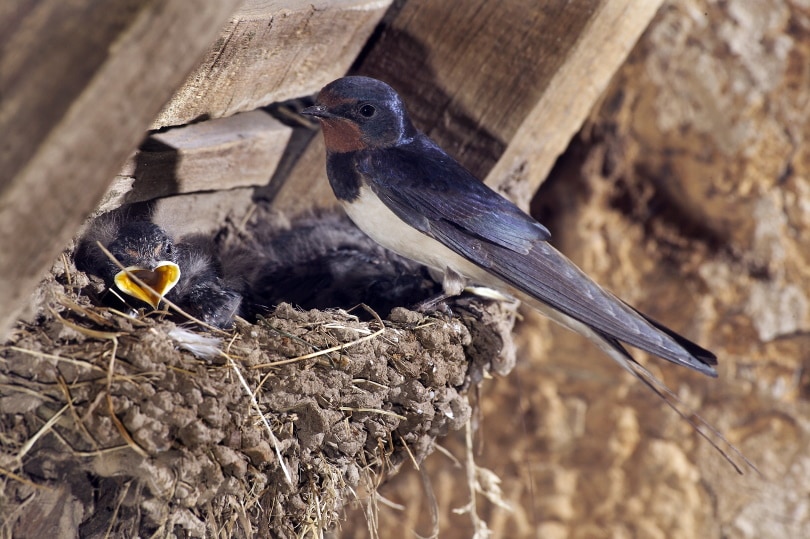
| Size | 4 to 9.4 inches |
| Habitat | Ponds, rivers, meadows, open woodlands, marshes, cities |
Swallows are small birds you can commonly encounter in meadows, marshes, cities, or any place with a food and water source. Although they’re typically harmless, it’s not uncommon for them to attack humans, typically dive bomb them from above. If you find yourself at the wrong place at the wrong time, a swallow might swoop down on you.
They usually do this by mistake as they consider you a predator or a potential threat to their nest. However, if you just go in a different direction, you can avoid the swallow attack.
2. Crows
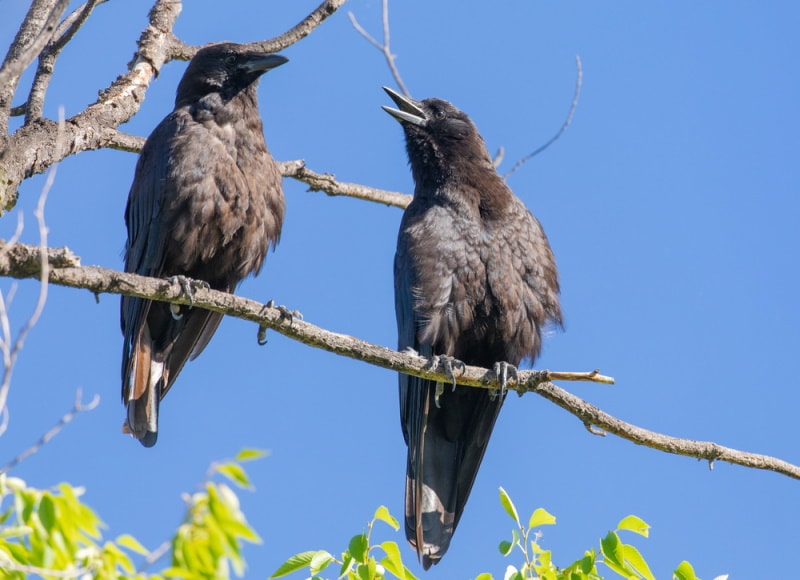
| Size | 16 to 20 inches |
| Habitat | Grasslands, forests, agricultural areas, farmlands, cities |
Crows are extremely smart birds that can occasionally act aggressively. American Crows are among the most aggressive birds in the USA and frequently dive bomb humans. This can happen when they feel threatened or if they notice something on you that triggers them. Sometimes, they will dive bomb humans in larger flocks which could potentially be dangerous for the attacked person. They will frequently circle around their victims, getting lower and flying faster.
As they can recognize people and they’ll consider you a threat every time they see you if they once attacked you, it’s best to try and avoid their territory.
3. Mockingbirds
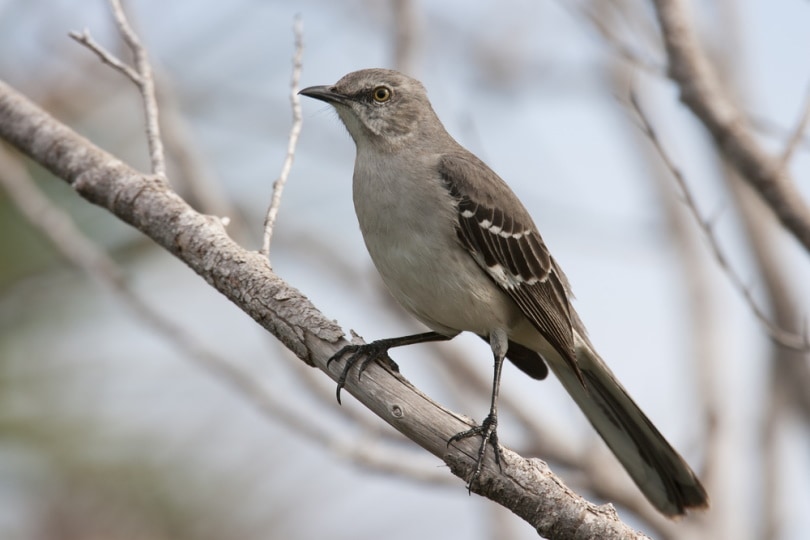
| Size | 8 to 10 inches |
| Habitat | Forest edges, open lands |
Mockingbirds are medium-sized songbirds that are common visitors in cities and bird feeders. Although they appear harmless, it’s not uncommon for them to attack other animals and humans. If they recognize you as a threat, Mockingbirds can take to dive-bombing you from above while using their beaks and claws as weapons. Of course, they can’t kill you, but they can seriously damage your skin and leave you with scars and bruises.
As there’s no way to protect yourself, avoiding their nesting territories is best to reduce the possibility of an attack.
4. Magpies
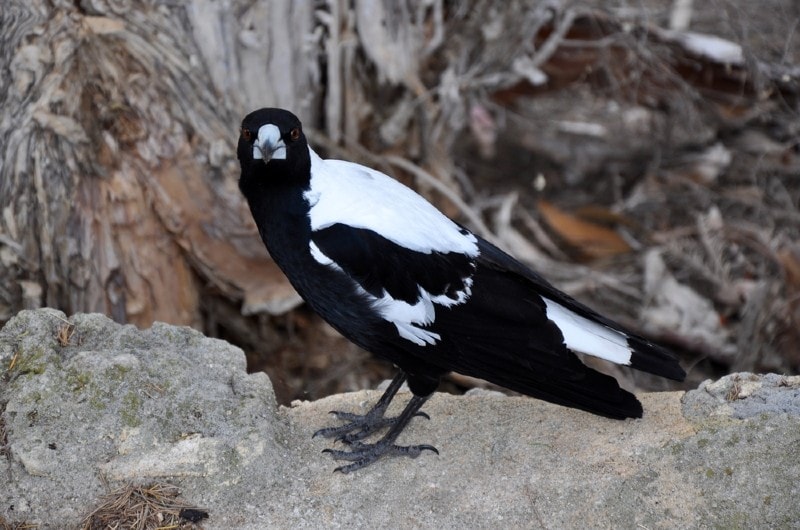
| Size | 10 to 20 inches |
| Habitat | Meadows, woodlands, grasslands, forest edges |
Magpies are curios, intelligent birds, quite similar to crows. Although they’re commonly friendly towards humans, they can perform dive bomb attacks if someone approaches their nest if they feel threatened. If you notice a Magpie nest near your home, try to avoid it to remain safe from attacks. Otherwise, if you enter their territory, the odds of the attack are high as they want to remain safe, as we appear as predators from their perspective.
5. Ostriches
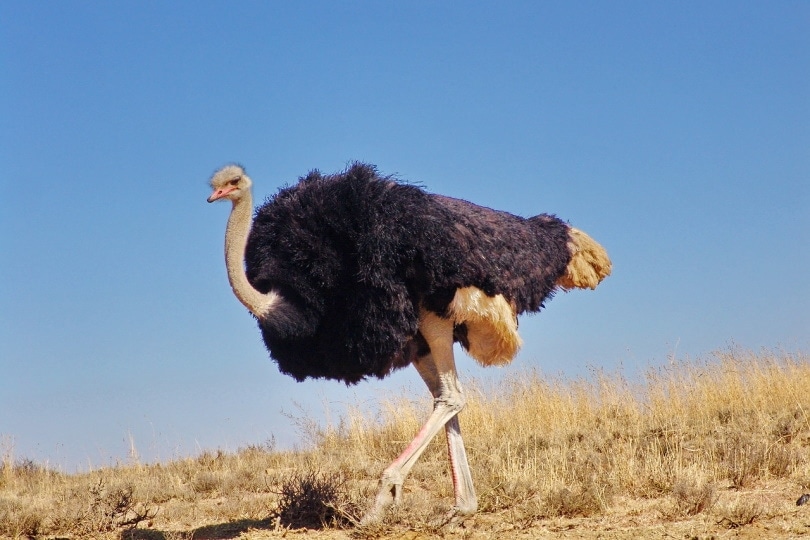
| Size | Around 9 feet |
| Habitat | Savannas, deserts |
Ostriches are native to savannas and deserts of Africa. These are the largest birds known to humans, and although they can’t fly, they run quite fast. If you even encounter these birds, it’s best to admire them from afar, as they can be deadly to humans and other animals. They prefer to stay away from predators, but if they feel cornered or threatened, they will attack you.
When they attack, they typically kick with their legs, and their attacks can be lethal as they have sharp claws.
6. Gulls
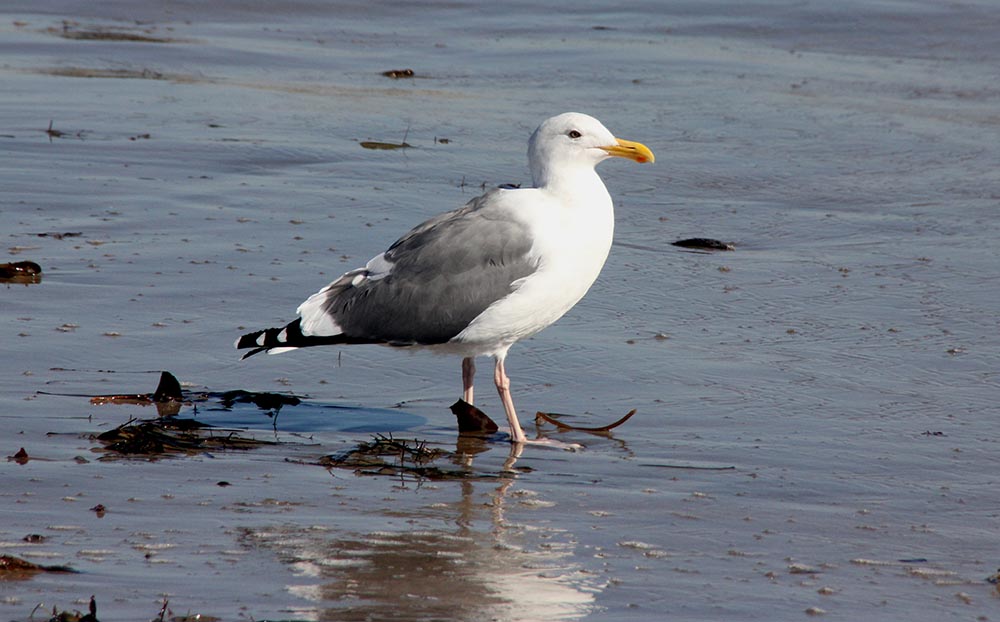
| Size | 11 to 30 inches |
| Habitat | Oceans, coastlines, bays, lakes |
Gulls are frequently aggressive, especially if you’re getting between them and their food. They also attack humans when they consider them a threat or if they mistake them for food. Another common reason for their attacks is protecting the nest or young ones. Gulls will dive bomb people from above and can hurt you with their claws.
However, you can avoid these attacks by keeping a healthy distance from Gulls and trying to avoid their territory, especially during feeding.
7. Cassowary
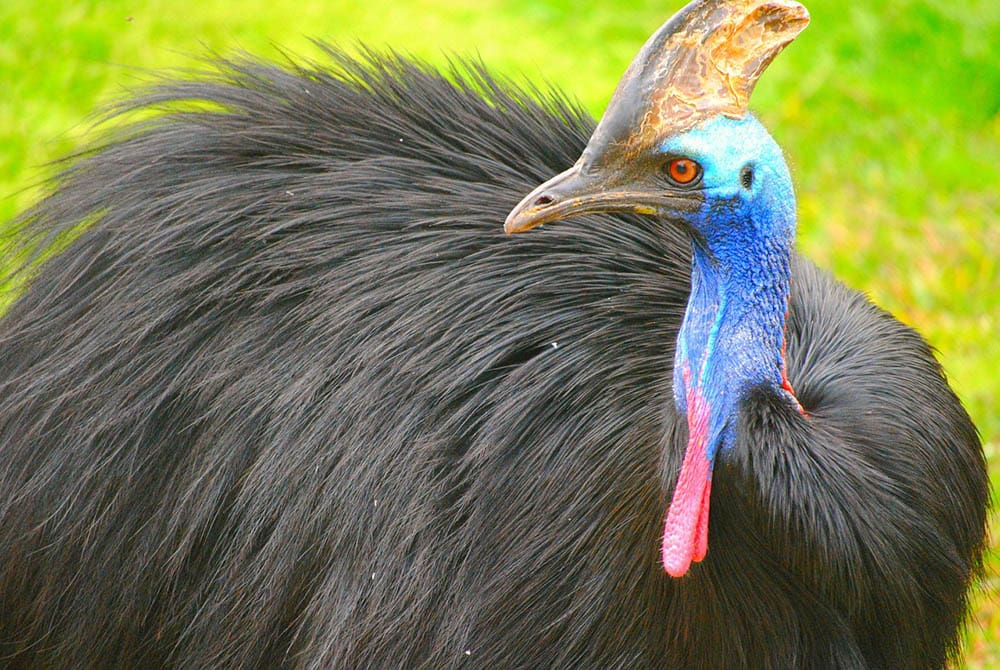
| Size | Around 6 feet |
| Habitat | Tropical rainforests, swamps, mangrove forests |
Per the San Diego Zoo, the Cassowary is the most dangerous bird in the world. The Cassowary is another large bird that can be around 6 feet tall, unable to fly, although it runs fast. They have three strong, dagger-like claws, and their kicks are so strong they could kill you with just one kick. Although you won’t encounter these birds out in the open, especially in the USA, you should be cautious if you see them in Zoos.
8. Owls

| Size | 5 to 28 inches |
| Habitat | Forests, mountains, deserts, plains |
Owls are typically calm, fluffy birds, but they can become vicious when they feel threatened or if they feel their young ones are in danger. When they think they’re in danger, they’ll likely dive bomb you to turn you away from their territory. Although it’s rare, owls can attack humans in public areas. Some of the most dangerous owl species are the Great Horned Owl and the Barred Owl, although all species can become aggressive when protecting their family.
9. Emus

| Size | Around 6 feet |
| Habitat | Grasslands, savannas, plains, eucalyptus forests |
Emus are large birds native to Australia, and you can find them throughout the continent. They don’t fly, but they run, reaching over 30 miles per hour. Similar to Casowarries, Emus have three-toed feet with claws they use for kicking predators and potential threats. Although human attacks and fatalities are rare, Emus can hurt humans and animals with their strong kicks. Various reports of Emu attacks in Australia have occurred, mostly in Emu farms, wildlife parks, and zoos.
10. Lammergeier

| Size | 37 to 49 inches |
| Habitat | Mountainous regions |
Lammergeiers, also known as the Bearded Vultures, are birds native to Asia and eastern Africa. They can attack humans, although the attacks are mostly unintentional or relatively rare. They can mistake you for prey, and if that happens, they will dive bomb you while flapping their large wings. They will also attack humans that approach their nest or their young. Lammergeiers are attracted by noise, so you should try to remain quiet if you approach their territory, and you should try to keep a safe distance.
11. Canadian Goose

| Size | 30 to 43 inches |
| Habitat | Ponds, lakes, fields, bays, marshes |
The Canadian Goose is a bird with a funny temper, mainly in the breeding and nesting season. Females become way more aggressive than males, and they can be especially dangerous when their young ones approach humans. The first thing they’ll do is try to chase you away, quacking and flapping their wings at you. On certain occasions, the Canadian Goose may try to bite you to protect their family, which is why you should be careful around these birds.

Final Thoughts
Most bird attacks are not deadly, and you’ll likely only get slightly injured. However, the thought of having to deal with an angry bird aiming your way is pretty unpleasant, which is why you should try to avoid their territories or seek shelter during an attack. They typically won’t attack you without reason, but it’s better to be safe than sorry.
Featured Image Credit: Rudra Narayan Mitra, Shutterstock
About the Author Visnja Radosavljevic
Visnja is a creative, adaptable content writer that covers various topics such as DIY, pets, home improvement, travel, gardening, and more. As a young mom and a college student, she didn’t have enough time to balance her personal and work life, so after multiple years of working a regular 9 to 5 job, she decided to pursue her passion and make a living out of it. She has been writing for a couple of years now, helping people to find valuable and interesting information online.
Related Articles:
Monocular vs Telescope: Differences Explained (With Pictures)
10 Types of Hummingbirds in Arkansas (With Pictures)
8 Types of Hummingbirds in Nebraska (With Pictures)
5 Types of Hummingbirds in Idaho (With Pictures)
3 Types of Hummingbirds in Mississippi (With Pictures)
8 Types of Hummingbirds in Kansas (With Pictures)
5 Types of Hummingbirds in West Virginia (With Pictures)
5 Types of Hummingbirds in Ohio (With Pictures)
